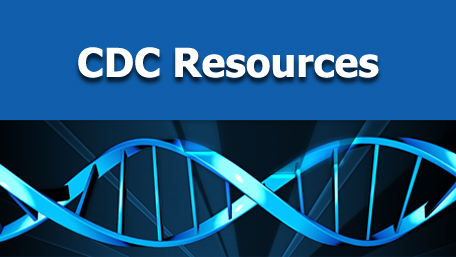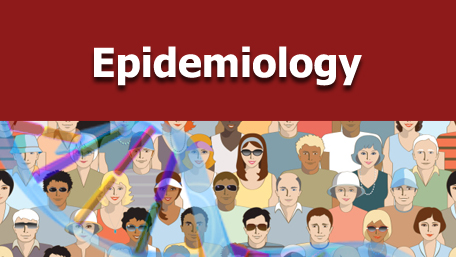26th ADA Anniversary: Health Is for All of Us
Adults with disabilities experience significant differences in health compared to adults who do not have disabilities. Visit Disability and Health Data System (DHDS) to understand the characteristics and needs of adults with disabilities in your state.
This month is the 26th anniversary of the Americans with Disabilities Act (ADA), a civil rights law that prohibits discrimination against individuals with disabilities in all areas of public life. The ADA has made a positive difference in the lives of those who have disabilities by providing better access to buildings, transportation, and employment, and creating opportunities for individuals with disabilities to work, play and contribute in their communities. However, adults with disabilities continue to experience differences in health compared with adults who do not have disabilities.
CDC's Disability and Health Data System (DHDS) provides information that public health professionals, decision-makers and communities can use to identify these differences, and plan accordingly to make sure people with disabilities have access to health care and are included in programs that can help improve their health and well-being.
Who are people with disabilities?
Anyone can have a disability at any point in their life. Disabilities, which limit how a child or adult functions, may include serious difficulty with walking or climbing stairs; hearing; seeing; or concentrating, remembering, or making decisions. One out of every five adults in the United States has some type of disability, and many people will experience a disability during their lifetime.
What do you know about the health of people with disabilities?
Disability is often equated with poor health. However, people with disabilities can and should have the same opportunity for good health as people without disabilities. Compared to adults without disabilities, adults with disabilities are more likely to be obese, smoke, have high blood pressure and be physically inactive. These are all preventable factors that can increase the risk for chronic diseases such as heart disease, stroke, diabetes, and some cancers, which are also more common among adults with disabilities. Knowing the differences in health between people with and without disabilities is the first step in making sure people with disabilities have access to the programs and services that can help improve their health. Visit DHDS to find state-based data that can help you identify the unique behavioral risk factors that affect people with disabilities. You can use this information to help identify priorities and develop inclusive programs and services that effectively improve the health of people with disabilities in your community.
What is DHDS?
DHDS is an interactive data system that provides national, as well as regional and state-level data on measures of health for adults with disabilities. Users can evaluate measures of health among adults with one or more of five functional disability types*: cognitive (serious difficulty concentrating, remembering or making decisions), mobility (serious difficulty walking or climbing stairs), vision (serious difficulty seeing), self-care (difficulty dressing or bathing) and independent living (difficulty doing errands alone). Users can also evaluate measures of health among adults with a limitation (who use special equipment or have an activity limitation because of physical, mental, or emotional problems), compared to those without a limitation.
Data on more than 30 health topics among adults with or without disabilities can be explored in DHDS, including smoking, physical activity, obesity, high blood pressure, heart disease, and diabetes.
Users can customize the data they want to view, making it easy to see information about their state or region, and they can identify health differences between adults with and without disabilities overall, as well as by age, sex, and race/ethnicity.
These are the types of questions that DHDS can help you answer:
- What is the portion of adults in your state who live with disability?
- What are the most common types of disabilities among adults in your state?
- How does the health of adults with disabilities in your state compare to those without disabilities?
How are CDC's partners and programs using DHDS?
Highlights from a few organizations include:
American Association on Health and Disability
The mission of the American Association on Health and Disability (AAHD) is to promote health and wellness initiatives for children and adults with disabilities through research, education, public policy, and public awareness. Members of this organization include disability researchers, public health professionals, disability organizations, state health departments, policy analysts, healthcare providers, and people with disabilities. AAHD's members use DHDS to
- Prepare grant applications,
- Provide data for policy makers,
- Integrate data into letters of support, presentations, and webinars, and
- Research for journal articles, books, and other publications.
National Association of Country & City Health Officials
The National Association of County and City Health Officials (NACCHO) represents the nation's 2,800 local health departments and its mission is to be a leader, partner, catalyst, and voice for local health departments.
Local health departments use DHDS to
- Identify the most relevant health priorities for people with disabilities in their communities,
- Plan for inclusive programs, products, and services where people with disabilities can most benefit at the local level,
- Inform the development of community health needs assessment questions for capturing health-related disability data at the local level, and
- Compare data at the local level to state-level data.
*In 2013 and 2014, the Behavioral Risk Factor Surveillance System (BRFSS), which is the DHDS data source, did not ask participants about deafness or serious difficulty hearing (as referred to in some sections of DHDS as "hearing disability"). Therefore, those data are not included in DHDS at this time. However in 2016, BRFSS will begin asking participants if they are deaf or have serious difficulty hearing.
Glossary
Chronic disease is an illness that goes on for a long time and often doesn't go away completely. People's symptoms may be better or worse over time, and they may use treatments to control symptoms and feel better.
Behavioral risk factors include any particular behavior or behavior pattern that strongly yet adversely affects health. These factors increase the chance of developing certain diseases or disabilities. Examples of these factors include tobacco use, alcohol consumption, smoking, obesity, physical inactivity, and risky sexual behavior.
Inclusion programs and services are those that include people with disabilities in everyday activities. These typically require practices and policies designed to identify and remove barriers that hamper the ability of people with disabilities to have full participation in society.

July 28 - August 4, 2016
DISABILITIES

Last Updated: Jul 26, 2016
- 26th ADA Anniversary: Health Is for All of Us
- 10 Things to Know about the ADA and Beyond
Disability.gov newsletter, July 2016 - Seventeen Novel Mutations in PCCA and PCCB Genes in Indian Propionic Acidemia Patients, and Their Outcomes.
Gupta Deepti, et al. Genetic testing and molecular biomarkers 2016 5 - Exome Sequencing and the Management of Neurometabolic Disorders
Maja Tarailo-Graovac et al, NEJM May 25, 2016 - Genetic Information Nondiscrimination Act. Final rule.
et al. Federal register 2016 May 81(95) 31143-59 - Regulations Under the Americans With Disabilities Act; Genetic Information Nondiscrimination Act. Final rule.
et al. Federal register 2016 May 81(95) 31125-43 - Perceptions and Discourses Relating to Genetic Testing: Interviews with People with Down Syndrome.
Barter Barbara et al. Journal of applied research in intellectual disabilities : JARID 2016 May - A new prognostic index of severity of intellectual disabilities in Cornelia de Lange syndrome.
Cereda Anna, et al. American journal of medical genetics. Part C, Seminars in medical genetics 2016 5 - Review - Rheumatoid arthritis: What have we learned about the causing factors?
Jalil Syed Fazal et al. Pakistan journal of pharmaceutical sciences 2016 Mar 29(2) 629-45 - Prevalence, phenotype and architecture of developmental disorders caused by de novo mutation
JF McRae et al, Biorxiv, April 2016 - A scoping study to explore the cost-effectiveness of next-generation sequencing compared with traditional genetic testing for the diagnosis of learning disabilities in children.
Beale Sophie et al. Health technology assessment (Winchester, England) 2015 Jun 19(46) 1-90 - A Genome-wide Association Study of Nonsyndromic Cleft Palate Identifies an Etiologic Missense Variant in GRHL3.
Leslie Elizabeth J, et al. American journal of human genetics 2016 3 - Reach of the Montana Cancer Control Program to Women with Disabilities.
Disease: Breast Cancer|Ovarian Cancer; Type: Data|Program; State: Montana - In Guanine We Trust: Genetic Testing and the Sense of Coherence.
DuBois James M et al. Narrative inquiry in bioethics 2015 5(3) 237-44 - Whole-Genome Sequencing and Disability in the NICU: Exploring Practical and Ethical Challenges.
Deem Michael J et al. Pediatrics 2016 Jan 137 Suppl 1S47-55

- CDC Information (3)
- CDC-Authored Pub (0)

- Human (9)
- Pathogen (0)

- Human (101)
- Pathogen (0)

- Human (8)
- Pathogen (0)

- Guidelines (0)
- Tier Table (0)
- Synthesis (3)

- Huamn (8)
- Pathogen (0)
Relevant Resources
- Cancer Genomics and Epidemiology Navigator (CGEN)
- Genetics and Genomics Competencies Center (G2C2)
- NIH Genetic Testing Registry
- NIH MedGen Database
- Online Mendelian Inheritance in Man (OMIM)
- PharmGKB





















.jpg)









No hay comentarios:
Publicar un comentario